Fantasia 2019, Day 5, Part 4: SHe
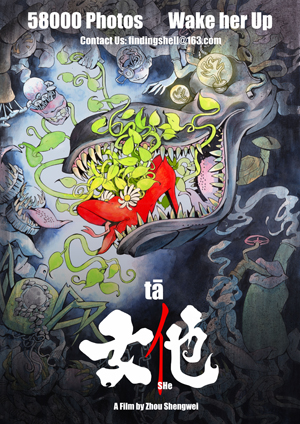 The fourth and last movie I saw on July 16 was the most experimental movie I’d seen at Fantasia, not only this year but possibly in all the time I’ve been going to the festival. Before that feature, though, was a short almost as strange.
The fourth and last movie I saw on July 16 was the most experimental movie I’d seen at Fantasia, not only this year but possibly in all the time I’ve been going to the festival. Before that feature, though, was a short almost as strange.
“Bavure” was directed and written by Donato Sansone. An animator’s hand mixes paints, makes an image, then remakes it, then remakes that, and so on through an increasingly cosmic story. A woman is made pregnant, a child comes out, and becomes an astronaut, and meets aliens, and on to a bleak climax. ‘Bavure’ means smear, or mistake, and the imagery of an animator remaking a smear of paints into a series of images fits. The animation technique’s a striking and effective way to move from image to image, the story’s cute, and at 5 minutes the film doesn’t outlast its welcome.
Next was the feature. It was called SHe, a movie directed, written, and edited by Zhou Shengwei. A work of stop-motion animation, Zhou made 268 models for the film himself, and took 58,000 photos over the course of 6 years to make it.
The film’s a staggering work of imagination. None of the characters are remotely human. They are, in fact, based on shoes. In a world of strange creatures assembled from everyday objects, entities based off of men’s shoes oppress entities based off of women’s shoes. One of the latter escapes and has a daughter, but the mother has to find a way to get the resources to feed the child. Only by adopting a disguise as a man’s shoe and entering into the dreadful danger of a pseudo-capitalist workplace can the two survive. But strange things happen in the workplace: the lady-shoe does not fit in, but turns out to have abilities the other worker-shoes don’t, attracting the attention of the boss of the shoes — who then draws her into an even stranger behind-the-scenes world where the tables start to turn.
At least that’s how I understand the basic plot. The film has no dialogue (vocal sounds come from Lv Fuyang), and the lack of human features on the characters give the audience some space to find their own meanings for things. The body language of these creatures is I think relatively clear, but it still requires some focus to follow events. Or it did for me; perhaps that’s a function of how I parse images as opposed to words.
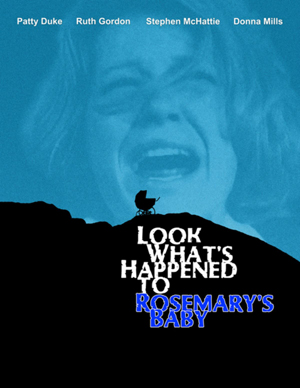 It’s relatively unusual for me to watch a movie that I know going in is not good. But every so often, and usually at Fantasia, something bizarre comes along that looks bad but also in its way promising. So it was that for my third film of July 16 I settled in at the De Sève Theatre for a screening of the rare 1976 TV-movie sequel to Rosemary’s Baby: an opus directed by Sam O’Steen titled Look What’s Happened to Rosemary’s Baby. Star Stephen McHattie was in attendance, and would stick around to take our questions after the film.
It’s relatively unusual for me to watch a movie that I know going in is not good. But every so often, and usually at Fantasia, something bizarre comes along that looks bad but also in its way promising. So it was that for my third film of July 16 I settled in at the De Sève Theatre for a screening of the rare 1976 TV-movie sequel to Rosemary’s Baby: an opus directed by Sam O’Steen titled Look What’s Happened to Rosemary’s Baby. Star Stephen McHattie was in attendance, and would stick around to take our questions after the film.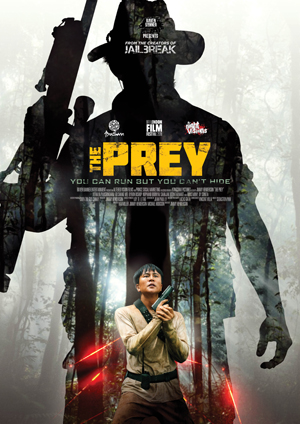 For my second movie of July 15 I went to the Fantasia screening room to watch the Cambodian film The Prey. Directed by Jimmy Henderson from a script by Henderson with Michael Hodgson and Kai Miller, this is a film that traces its narrative lineage back to Richard Connell’s immortal “The Most Dangerous Game.” In this case, the game’s played in the wilds of Cambodia, and the rules turn out to be surprisingly complex — and the number of players surprisingly large.
For my second movie of July 15 I went to the Fantasia screening room to watch the Cambodian film The Prey. Directed by Jimmy Henderson from a script by Henderson with Michael Hodgson and Kai Miller, this is a film that traces its narrative lineage back to Richard Connell’s immortal “The Most Dangerous Game.” In this case, the game’s played in the wilds of Cambodia, and the rules turn out to be surprisingly complex — and the number of players surprisingly large.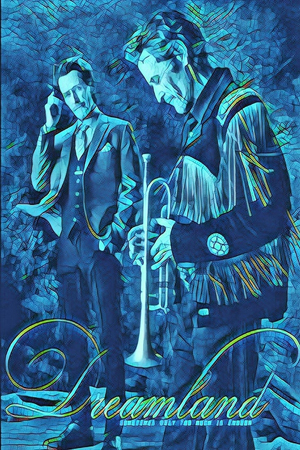 I have fond memories of Bruce McDonald’s rock n’roll road movies from the 1990s, specifically Roadkill, Highway 61 Revisited, and Hard Core Logo. It had been a while since I’d seen one of his films (one drifts away from artists, sometimes, like friends we once knew), but I began July 15 at Fantasia in the De Sève Theatre getting reacquainted with McDonald’s art by way of his new movie Dreamland, at Fantasia presented as Bruce McDonald’s Dreamland.
I have fond memories of Bruce McDonald’s rock n’roll road movies from the 1990s, specifically Roadkill, Highway 61 Revisited, and Hard Core Logo. It had been a while since I’d seen one of his films (one drifts away from artists, sometimes, like friends we once knew), but I began July 15 at Fantasia in the De Sève Theatre getting reacquainted with McDonald’s art by way of his new movie Dreamland, at Fantasia presented as Bruce McDonald’s Dreamland.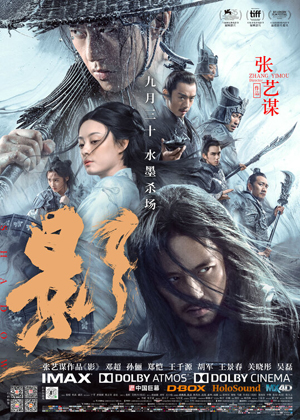 My fifth and last movie of July 14 brought me back to the Hall Theatre. I had not seen two consecutive movies that day in the same cinema; no two films had come from the same country. It was in retrospect a good day at Fantasia, and it was ending with a bang: the latest film from Zhang Yimou, Shadow (also known as Ying, 影). Written by Zhang with Li Wei, it’s a tale of historical battles and political machinations told with visual dynamism and a distinct colour sense, fitting nicely alongside previous works by Zhang such as Hero, House of Flying Daggers, and Curse of the Golden Flower.
My fifth and last movie of July 14 brought me back to the Hall Theatre. I had not seen two consecutive movies that day in the same cinema; no two films had come from the same country. It was in retrospect a good day at Fantasia, and it was ending with a bang: the latest film from Zhang Yimou, Shadow (also known as Ying, 影). Written by Zhang with Li Wei, it’s a tale of historical battles and political machinations told with visual dynamism and a distinct colour sense, fitting nicely alongside previous works by Zhang such as Hero, House of Flying Daggers, and Curse of the Golden Flower. My fourth film of July 14 brought me back across the street to the De Sève Theatre for a tale from the Philippines, Mystery of the Night. Directed by Adolfo Alix Junior, it’s an adaptation of a play by Rody Vera called Ang Unang Aswang (The First Aswang). As written for the screen by Maynard Manansala, it’s a meditative story that doesn’t betray its stage origins in the slightest, a deliberately-paced visual spectacle about colonialism, magic, and the wilderness.
My fourth film of July 14 brought me back across the street to the De Sève Theatre for a tale from the Philippines, Mystery of the Night. Directed by Adolfo Alix Junior, it’s an adaptation of a play by Rody Vera called Ang Unang Aswang (The First Aswang). As written for the screen by Maynard Manansala, it’s a meditative story that doesn’t betray its stage origins in the slightest, a deliberately-paced visual spectacle about colonialism, magic, and the wilderness.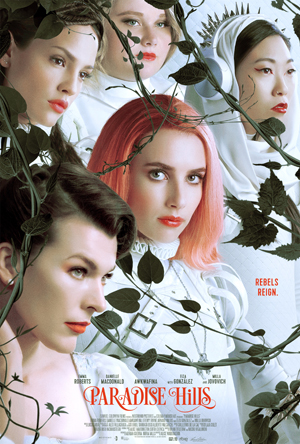 I saw my third film of Sunday, July 14, in the big Hall Theatre. Paradise Hills was introduced by director Alice Waddington, who spoke about her love for Lord of the Rings, Dungeons & Dragons, and The Neverending Story, and how she wanted to make something that reflected her and her friends. It was an interesting way to set up a fine film that continually did unexpected things.
I saw my third film of Sunday, July 14, in the big Hall Theatre. Paradise Hills was introduced by director Alice Waddington, who spoke about her love for Lord of the Rings, Dungeons & Dragons, and The Neverending Story, and how she wanted to make something that reflected her and her friends. It was an interesting way to set up a fine film that continually did unexpected things.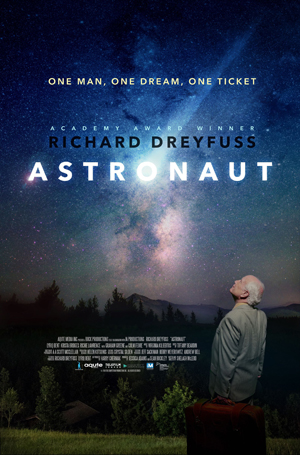 I saw my second movie of the day of July 14 in the Fantasia screening room, where critics can watch a movie on a large computer monitor at a time convenient to their schedules. And indeed scheduling had brought me to the screening room to fill a gap between two other films I wanted to see. Note then that I did not see the film I’m about to describe in a theatre; I don’t think the way I watched it affected my reaction, but it’s perhaps best to give it the benefit of the doubt.
I saw my second movie of the day of July 14 in the Fantasia screening room, where critics can watch a movie on a large computer monitor at a time convenient to their schedules. And indeed scheduling had brought me to the screening room to fill a gap between two other films I wanted to see. Note then that I did not see the film I’m about to describe in a theatre; I don’t think the way I watched it affected my reaction, but it’s perhaps best to give it the benefit of the doubt.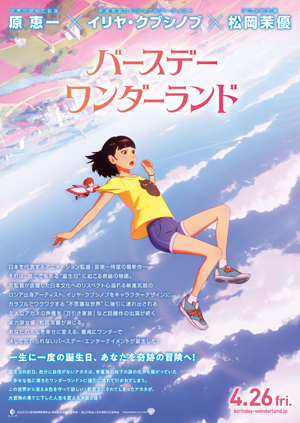 In reviewing the movies I see at Fantasia I like to mention the theatre in which I see a film, because the room the film’s screened in often gives a hint about the movie’s nature. The smaller De Sève is often a venue for indie cinema and lesser-known pictures. The larger Hall will usually hold more obviously popular movies, meaning a lot of action films and blockbusters. This is not inevitable, and there are a number of reasons why something you’d think you’d see in one cinema gets hosted in the other. But the two theatres do have their own personalities, and sometimes you watch a movie that fits the personality of the place perfectly.
In reviewing the movies I see at Fantasia I like to mention the theatre in which I see a film, because the room the film’s screened in often gives a hint about the movie’s nature. The smaller De Sève is often a venue for indie cinema and lesser-known pictures. The larger Hall will usually hold more obviously popular movies, meaning a lot of action films and blockbusters. This is not inevitable, and there are a number of reasons why something you’d think you’d see in one cinema gets hosted in the other. But the two theatres do have their own personalities, and sometimes you watch a movie that fits the personality of the place perfectly. My second feature film of Saturday, July 13, was at the De Sève Theatre. It was the one-man animated feature Away, by Latvian Gints Zilbalodis. Zilbalodis wrote, directed, edited, animated, designed the sound, and did everything else for this 75-minute wordless fable about a young man trying to cross a mysterious island.
My second feature film of Saturday, July 13, was at the De Sève Theatre. It was the one-man animated feature Away, by Latvian Gints Zilbalodis. Zilbalodis wrote, directed, edited, animated, designed the sound, and did everything else for this 75-minute wordless fable about a young man trying to cross a mysterious island.